Siena is a smaller city, and after a week here, I had seen all the sights and needed something fun to do. Enter Charlie Hunnam. In my dreams. But when I saw the King Arthur poster on my walk, I got an idea. I’d go see a movie in an Italian theatre. At best, it would be subtitled, at worst, it’s Charlie in Italian. I could live with that.
Upon some enquiry, it turns out the Italians adamantly prefer dubbed films to subtitled ones. This is quite different from what we typically find in Canada and the US, with the exception of Quebec, where we generally prefer our foreign films and TV programs with subtitles. Due to the vast quantity of American movies that make their way to Italy, I thought this must be a serious career being a voice artist, so I did some digging.
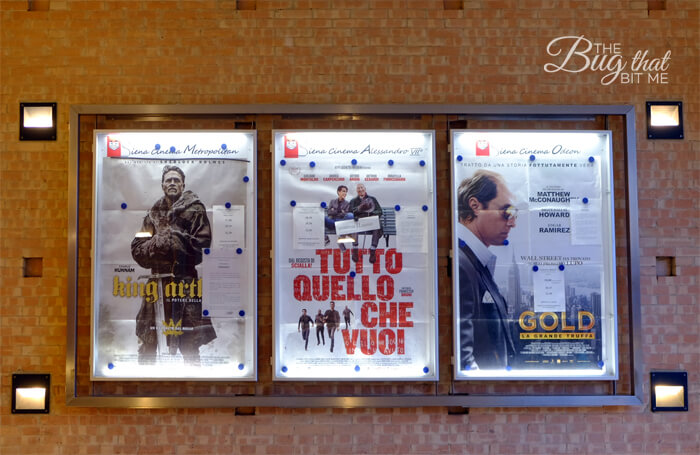
Italy has a long career of dubbing arts and has perfected it along the way. In fact, there is even an Oscar-like reward for the best doppiatori in the business, the Leggio d’Oro. They have a system where the same actor is contracted to dub his English counterpart for every role. This ties the success of the Italian dubber to their English actor. Better hope you get cast well from the get-go!
I have watched a few TV programs on Italian TV over the years and have to admit, I’ve not been overly impressed. The mouths don’t often match up, the timing can be off, the voices are flat or exaggerated, and the voices are “too” Italian. Not properly speaking the language, I’m not sure if that is due to something like a regional accent or perhaps, overacting. Watching X-Files in Italian was so distracting, mainly due to the male characters’ voices. But I have to say that Family Guy improved with a far less irritating voice for Peter.
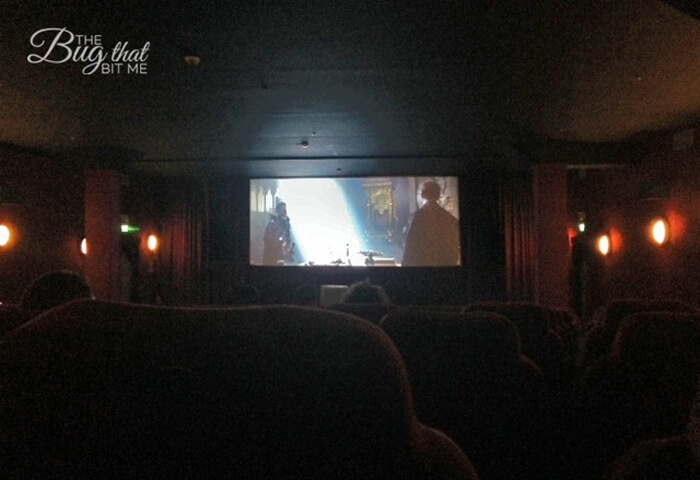
But King Arthur was flawless. I have no idea how they do it, but the mouths matches seamlessly, the voices are a “neutral” Italian and they fit the actors in every sense. The intonation fit the scene. I could tell when a humorous line was delivered. In fact, I forgot I was watching a dubbed film after a while.
My real job consists of working on films, specifically creating subtitle files for films, so I have a pretty clear understanding of how much effort goes into this work, and the Italian film industry pulled out all the stops to make the dubbing of this film exceptional. I would love to see them work. I would especially like to know how they manage to sync the lips. Italian, like French, uses more words than the economic English language to say the same thing. The voices don’t appear to be sped up. How do they do it? How much are they editing? How is that changing the mood of the film? I guess I’ll have to learn Italian fluently to answer those questions.
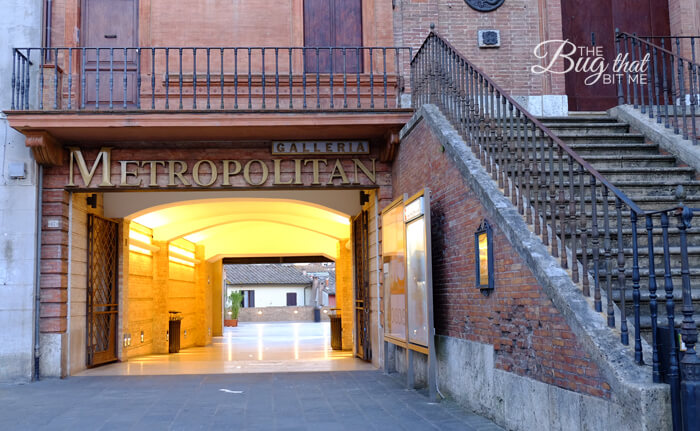
Intervallo
An intermission? At the movies? Yep. About halfway through the film, in the middle of a sentence, the screen went black and the lights came on for two minutes or so. I thought something was wrong until “INTERVALLO” popped up on the screen. I can’t say I’m wild about the idea of an intermission in a movie theatre. The idea is to suspend reality for a couple of hours, so I don’t want to be snapped out of that. After all, the creators of film work hard to bring us there in the first place. And how about where it was placed? Right in the middle of a scene. And to make matters worse, the movie started up again at the next scene. What the heck, Italy?
Dubbing History in Italy
In my research, I came across this article by Roderick Conway Morris. It is old, written in 1992, but gives us a look at the importance of the dubbing industry in Italy and how it started. The quote below is dated, but is interesting insight nonetheless. I would love to be able to compare current-day figures.
“Of what Biondo called the “dubbing countries” (that is, France, Germany, Italy and Spain), Italy has, he said, by far the biggest industry with something like 1,200 dubbers. Dubbing a foreign-language work, from casting the “voices” to finished print, takes four to six weeks and costs an average of $50,000.”
A strike by the National Association of Actors and Dubbers in the summer of 2014 over underpaid work, which was joined by dialogue writers, assistants and directors, saw Italians unexpectedly getting subtitles on their TV programs instead of dubbed dialogue. There were many complaints. Dubbers have a lot of power in the industry, and in fact, dubbers’ strikes in the past have seen theatres close, postponing releases until the strike was over rather than subtitle films.
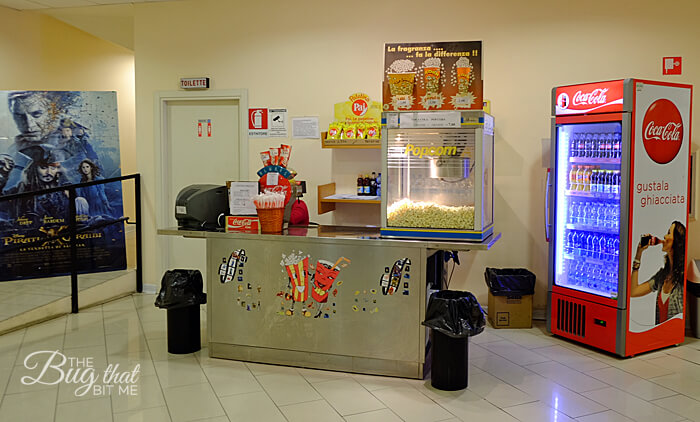
Concession
I loved the concession stand! It was small, with normal-sized, affordable snacks. No $20 popcorn and pop options here. And no need to sneak in your own snacks.
Cost
The cost of my film at a small theatre in Siena was €6. What a bargain! Bigger cities will likely have higher prices. There are discount days that vary with the theatre, so check online before you go if that interests you. Some theatres also allow you to book your tickets online, if you can navigate an Italian webpage.
Tips for Metropolitan Cinema, Siena
Upon entering the small square off of Piazza Gramsci, if you turn left, you will go down, down, down to the entrance to the cinema. If you enter to the right, you will go down an escalator and then need to take the lift down to -3. It looks dodgy once you get off, but keep going and you’ll find the theatre. Also, there’s a big supermarket in this building, which I sadly discovered a bit too late to make use of. Prices are much better than at the pretty (tourist) shops in town.
One last thing to consider in the dubbing/subtitling debate is that fact that in most countries where subtitles of English movies are used rather than dubbing, the level of English spoken is generally much higher. Makes sense. Maybe I should be watching more Italian films! What do you think, would you check out a movie in another language? Do you think it might help you learn that second (or third) language? I’d love to hear your thoughts!
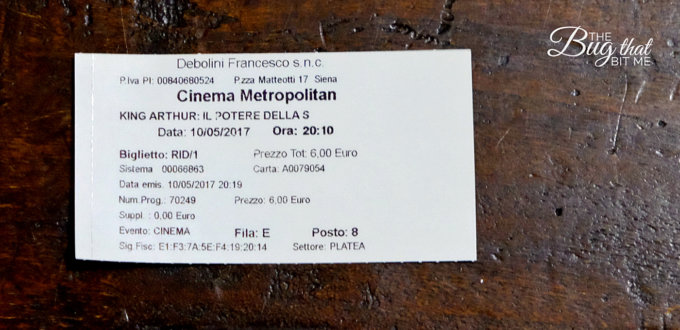
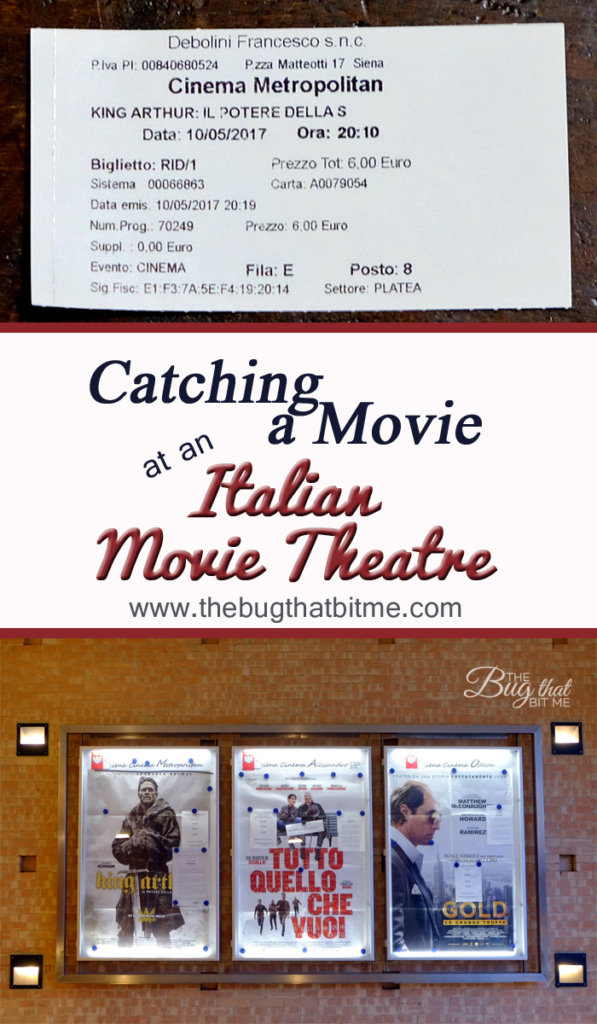




Currently it looks like WordPress is the preferred blogging platform available right now. (from what I’ve read) Is that what you’re using on your blog?|
Keep on writing, great job!|